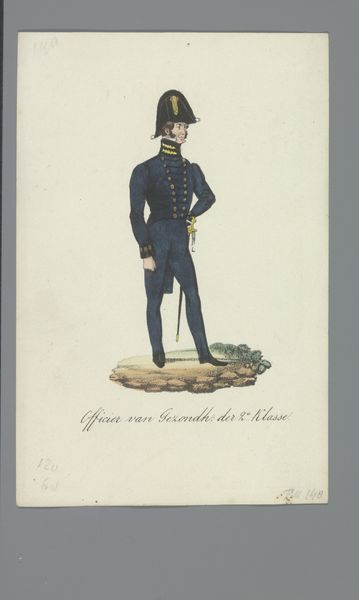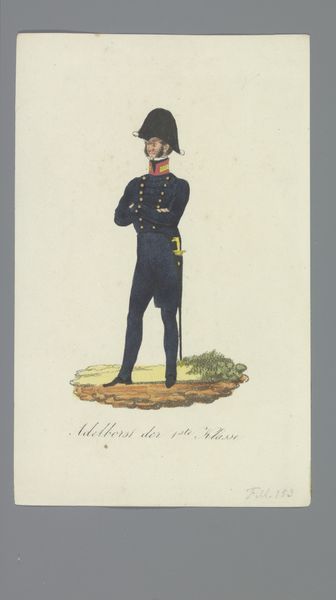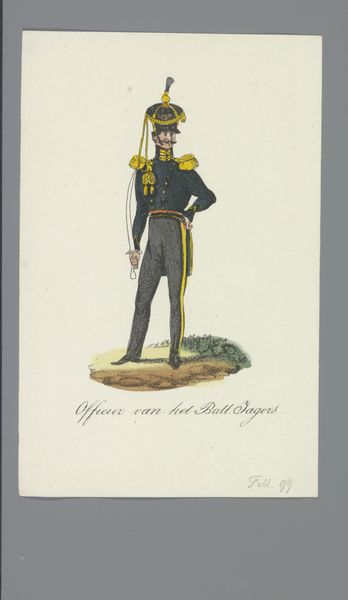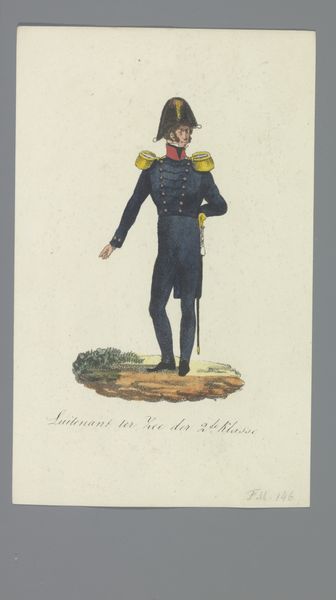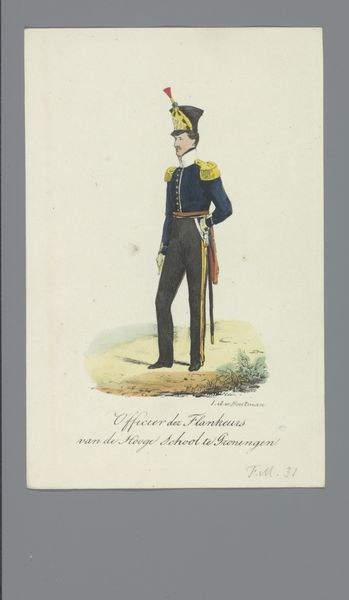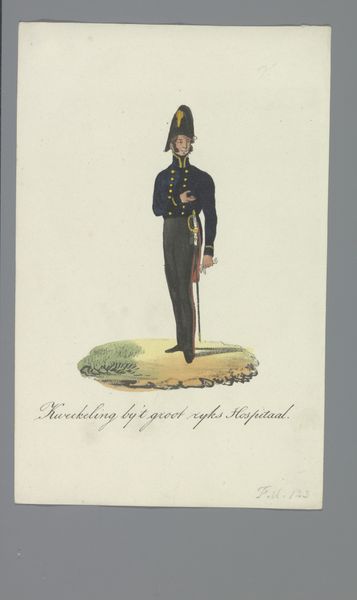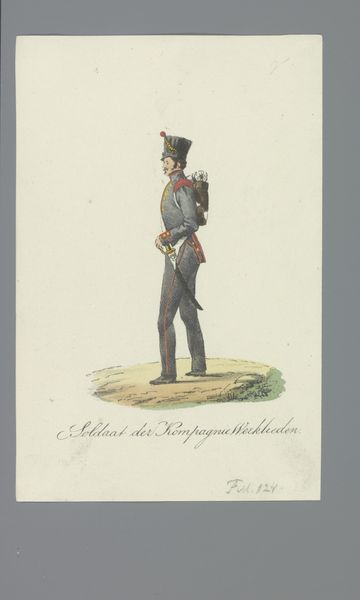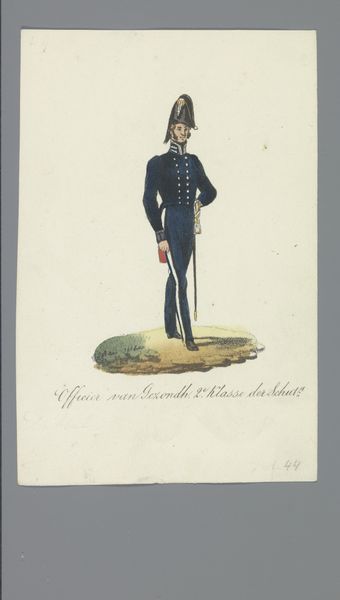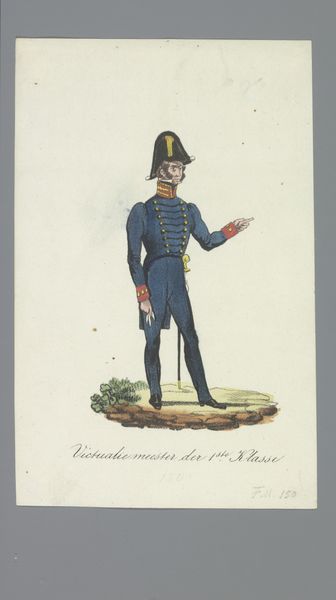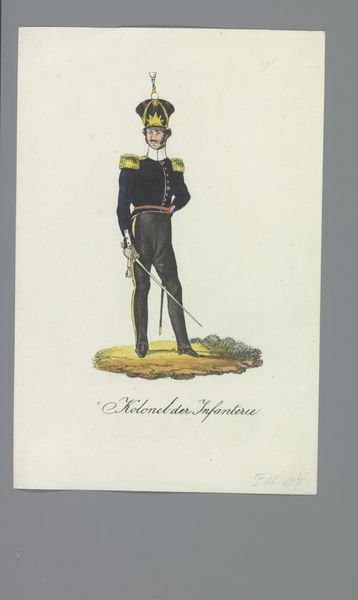
watercolor
#
portrait
#
watercolor
#
romanticism
#
costume
#
watercolour illustration
#
genre-painting
#
academic-art
Dimensions: height 170 mm, width 110 mm
Copyright: Rijks Museum: Open Domain
Curator: Looking at this watercolor piece titled "Victualie meester van de 2e Klasse," created sometime between 1835 and 1850 by Albertus Verhoesen, I'm immediately struck by the subject's unwavering pose and the distinct impression he wishes to convey. What's your initial response to it? Editor: The formality is striking. The man stands with arms crossed, a stance often communicating authority or defiance. Yet, rendered in delicate watercolor, his uniform softens, becoming almost ornamental. There’s a tension here—what’s he protecting, or perhaps hiding? Curator: The uniform, though formal, does convey societal identity, referencing a particular structure through visual symbols. In this case, it hints at the provisioning officer's role. He's not just a man; he represents an institution. What cultural undercurrents resonate within the specific symbols present, in your perspective? Editor: Right, the costume as cultural shorthand is key. This "Victualie meester," the second-class provisions master, signifies access and control—who gets fed and how. Consider food as a potential weapon during periods of upheaval; this master held substantial power. Are we seeing just a portrait or a commentary on control and sustenance? Curator: It is tempting to go with the second suggestion. Consider that within visual traditions, clothing has signaled shifts in power, from religious vestments to military garments. But perhaps we shouldn’t overstate his dominance? The artist chose to present a modest-sized watercolour illustration, and the figure, in comparison with the large background, somehow looks… isolated. Editor: Fair point. While the uniform implies societal role, the relative emptiness of the image lends a poignant touch, highlighting individuality even within the construct. I agree that the chosen materials emphasize fragility. The visual and contextual contrasts pull in different interpretive directions, don't they? Curator: Indeed. Seeing how Romanticism, known for emotion, subjectivity, and, above all, individualism, interacts here with an Academic art style gives clues to understand 19th-century power dynamics. I come away seeing a visual negotiation. Editor: Yes, me too. There's a fascinating tension between duty and individuality in this image, raising subtle questions about how power actually functions at a personal level.
Comments
No comments
Be the first to comment and join the conversation on the ultimate creative platform.

